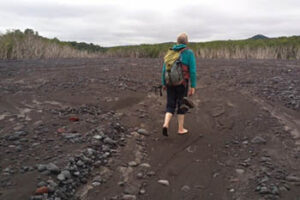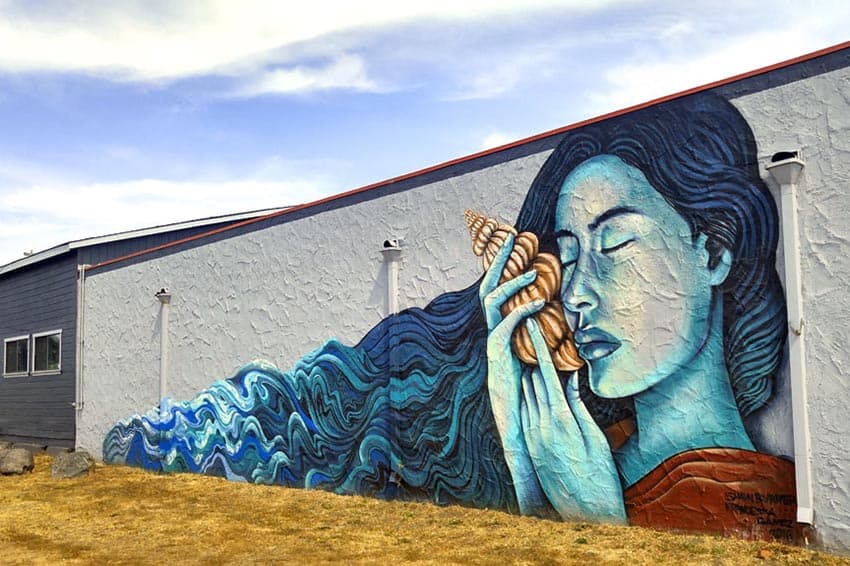
Tulsa, the Land of Opportunity: Your Guide to America’s Most Generous City
By Alyssa Pinsker
Some residents of Tulsa say it is the new Austin, a still oil-rich town in Oklahoma that continues to evolve as a diverse and vibrant city committed to rebuild Black Wall Street.

It has a strong and active albeit small Jewish community, two James Beard-nominated chefs, and an international community along with plenty of chic multicultural speakeasies like Bull in the Alley and Boston Tile.
The city is abundantly creative as a result of the strategic influx of New York City and Los Angeles transplants. This is spearheaded by the aggressive and generous recruiting projects promoted by six local billionaires, with their campaigns like Tulsa Remote, the Tulsa Artist Fellowship, and Tulsa Tomorrow.
The homegrown talent is also supported by philanthropy like the incredible Kaiser Foundation which sponsored our visit and the Hansen brother’s BOK center.
The nearby Cherokee Nation is around an hour and a half away and is a key part of the history and foundations of Oklahoma. I was lucky enough to spend my Alternative Spring Break here almost 25 years ago, which happened to be my first trip without my family.
I had an immersive experience in another culture as a volunteer and I will never forget the lessons I learned about the Trail of Tears. Oklahoma City, the same distance away by toll highways, is a fun stop and if you can squeeze it in, an easy way to get an overview of the city is by a tour boat on the canals known for its microbreweries.
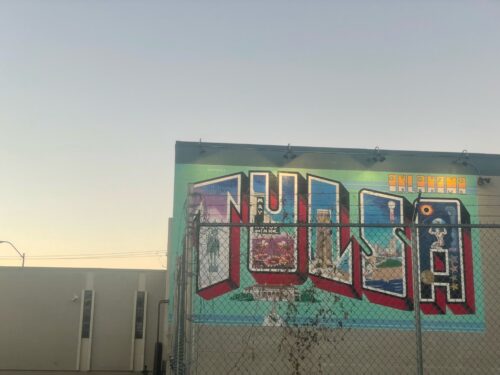
Dinner at Elote
We started our trip to Tulsa with dinner at Elote, a local Mexican restaurant named after the popular street corn. It was a local experience for residents with the scene ranging from a few local cowboys to a post-drag-show birthday party.
We tried the classic margaritas, I asked for a skinny, then unique (to me) decadent fried avocados, vegan queso which was excellent and quite cheesy (the first of many Vegan-friendly spots in Tulsa) and both jackfruit and organic beef tacos; and of course, elote.
All these hit the spot, and the colorful Mexican folk decorations were perfectly eccentric and homey.
While we were there, we met Brandon Oldham, a Tulsa native, and program officer on the “Vibrant and Inclusive” Tulsa team at George Kaiser Family Foundation (GKFF).
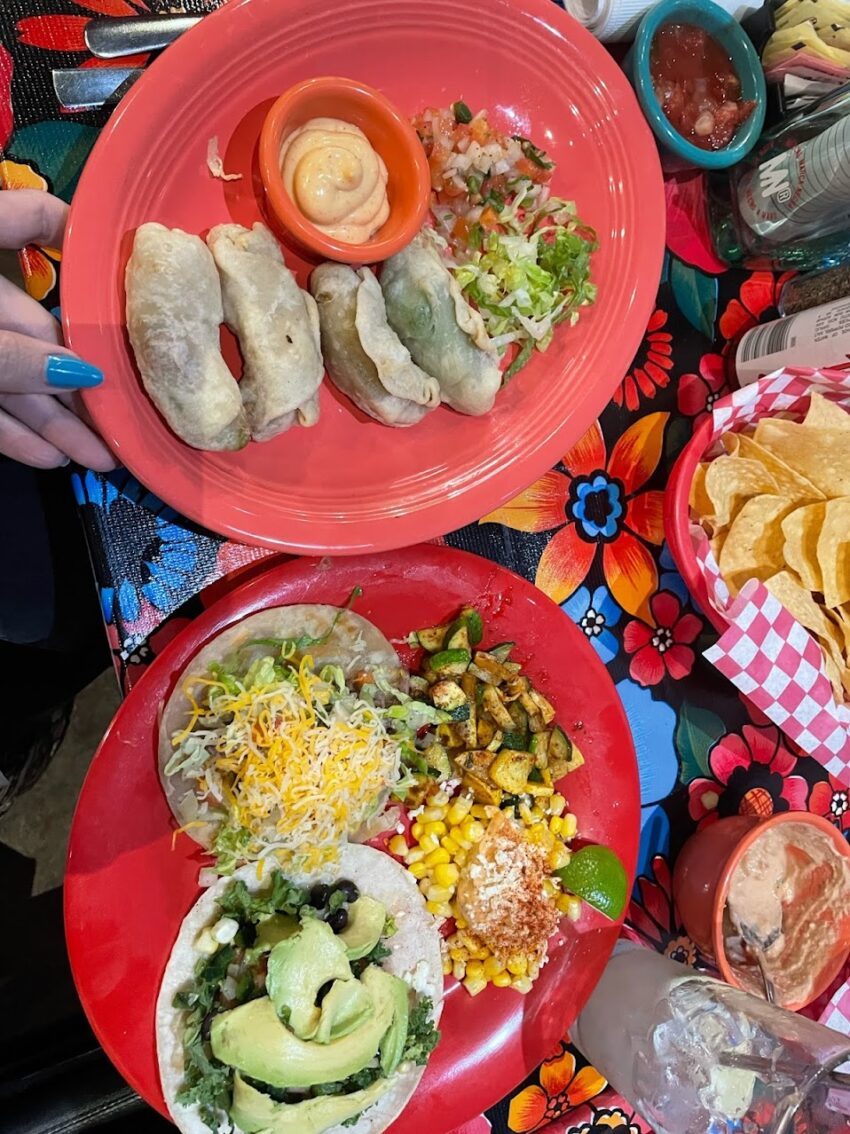
He told us about incredible offers to lure residents from other states to Tulsa spearheaded by GKFF, like a free doula for every woman of color, and Birth Through Eight Strategy for Tulsa: a comprehensive, continuous and integrated approach that focuses on families in the earliest years of a child’s life to help break the cycle of intergenerational poverty by Mr. Kaiser who is 79, and one of the world’s top 50 billionaires.
Tulsa Club Hotel
His philanthropic organization along with others like the Loebeck-Taylor foundation has shaped much of the unique and utopic programs in Tulsa. After Elote, we toured an art-deco preserved Tulsa Club Hotel, which has maintained and updated all of the gorgeous architecture and design.
There is also a Tulsa Art Deco museum called Decopolis, which has the highest density of Art Deco buildings per mile of any city in the States.
After dinner, I headed to a local Karaoke joint, Shady Keys in the Blue Dome District, to meet up with my friend and former NYC modeling agent of five years, Nikki Gomez.
She is a Bronx native who almost moved to San Diego but is now participating in Tulsa Remote (she absolutely loves it and is very active in the community) where she belts out her hits along with her diverse karaoke crew.
The Smell of Cigarettes
While there, we happened to participate in an ongoing 40th birthday party and the vibe in the air was pure hope and possibilities coupled with lots of beer and the foreign smell of cigarette smoke.

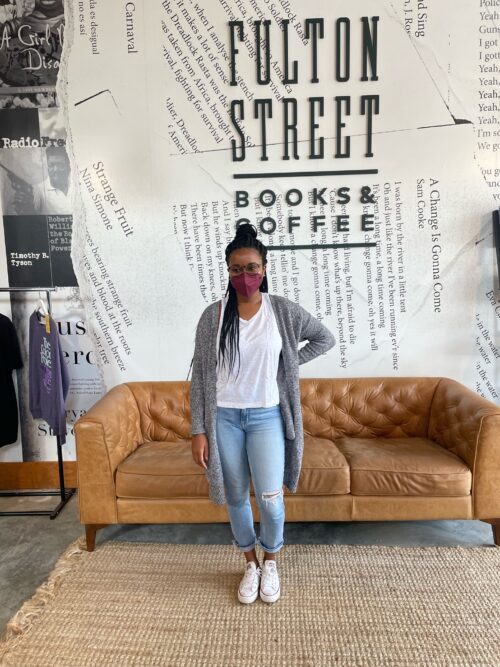
The next morning, we went for coffee and pastries at Antoinette Baking Company, a place I am so obsessed with that I went back two more times. They have gigantic gooey vegan goodies like freshly baked cinnamon rolls and homemade giant Oreo cookies.
Tulsa is undoubtedly famous for its Southern cooking (Arkansas is right next door.) Antoinette also serves savories like breakfast burritos all with vegan, non-vegan options, and delicious coffee with non-dairy milk options.
We then headed to Fulton Street Books & Coffee, owned by 32-year-old Onikah Asamoa-Caesar who is originally from New Jersey (and named it after the street her grandmother lived on in the Garden State, though it lies on Latimer in Tulsa.)
Like many of the young entrepreneurs and change-makers that we met, Ms. Asamoa-Caesar participated in Teach for America Tulsa and stayed to continue making progress in the city.
Her vision for the bookstore was “for Black folks to feel like white people when they walk into Barnes and Noble.”
It’s now a thriving hub for the BIPOC intellectuals and visionaries. While we were visiting, a group from “Miami Meets Midwest”, a tour for minority founders, movers and shakers, were gathered there to film themselves checking out the “flyover” city and see its significant investment and attention into minority communities like free code camps that pay people to learn.
The books there were all lovingly selected to reflect the black and brown community and I picked up a Native American children’s book, “Fry Bread,” combining my favorites of food, culture and learning, for my nephew. Onika’s goal is to own the building she leases to start rebuilding the nearby Black Wall Street.
Next, we had a brief but meaningful tour of John Hope Franklin Reconciliation Park, which is free to the public. The park had beautiful sculptures symbolizing hope and reconciliation which detailed the day and night of the 1921 Tulsa Race Massacre.
The sculptures included three larger-than-life bronze sculptures representing actual pictures from the then so-called riot: Hostility, a man fully armed for assault. Humiliation, a man with his hands raised in surrender, and finally: Hope, a sculpture of Maurice Willows, Director of the Red Cross holding a baby born June 1921.
We then learned the short version of the story: on May 31, 1921, Dick Rowland, an African American shoe shiner, had a highly contested physical confrontation with a white woman, Sarah Page, the elevator operator.

He claimed he tripped and grabbed her arm, she claimed assault. The newspaper article resulted in inciting an uproar for angry whites and the black community responded by arming themselves after hearing lynching rumors.
One such man responded with gunfire when a white man asked him to disarm, resulting in 10 whites and two blacks killed. This led to over eighteen hours of conflict ending with close to three hundred people being killed.
Racial Tensions in Tulsa
This event is considered one of the single worst incidents of racial violence in American history. The story of this horrific night of May 31, 1921, to June 1, 1921, was reiterated to us at Greenwood Rising, our next stop.
The interim director of Greenwood Rising, Philip Armstrong, a charismatic and infectiously passionate fellow led us on the tour of Greenwood Rising in his dapper vest, green dress shirt and green bowtie. The museum opened that May and was free with a timed ticket.
It was interactive and quite well attended, and featured a barbershop for a brief moment of levity to tell the full story of one night, the Tulsa Race Massacre which destroyed Black Wall Street and hundreds of lives, though only 36 are on record.
It also left around 10,000 homeless primarily black members of the community. But it also told the story of Black Wall Street, coined by Booker T. Washington, an incredibly prosperous community about 35 square blocks that thrived for 21 years.
After the abolishment of slavery in December 1865, the Native Americans were given land by the government in the later 1800s and early 1900s through the General Allotment Act of 1887 (The Dawes Act).
Through this, many Americans came to Oklahoma during the oil boom but the laws favored the natives which offered the opportunity to African-Americans with Native ancestry to create Black Wall Street which lasted from 1905 to 1921.
Greenwood Rising is based on the African American Museum of History and Culture in D.C. and was designed by the community. It addresses the arc of oppression, the theme of reconciliation, and the Greenwood spirit. It was an inspiring bustling neighborhood with a popular sneaker and art shop, silhouette, coffee shops, restaurants, and a hotspot for the black intelligentsia, the Harlem of Tulsa.
Dining in Tulsa: So Many Choices
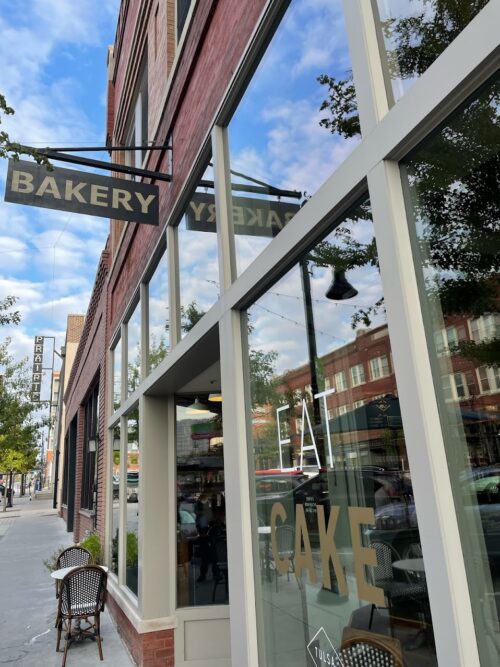
After this, we went to the extremely impressive Mother Road Market, named for its location on so-called Route 66’s, which housed an initiative by another billionaire family, the Loebeck Taylor Family foundation.
It is a fairly typical hipster food hall, bright and cheerful with global offerings like exotic bagels, Nashville hot chicken, regional street food such as the incorrectly spelled Philadelphia cheesesteak, Brazilian fare, and one place that solely specializes in eggs: Da Yolk.
Everything was delicious but what was so fascinating were the programs in place that brought these restaurants to Tulsa. Elizabeth Ellison, the CEO of Lobeck Taylor Foundation appeared on Top Chef Family Style which funds Kitchen 66 (https://www.kitchen66.com/) and Mother Road.
Basically, you can rent the kitchen for a very low price in a takeover cafe or participate in the full program for a stall or food truck. The program has a Latinx counterpart, Cosina66 (https://www.cosina66.com/ ) which is just as popular and successful. There was also a booth of 1921 Greenwood dedicated to celebrating Black Wall Street/Historic Greenwood.
After this global sampling of lunch, we headed to the iconic Gathering Place, The Gathering Place a 6.6-acre park reminiscent of Scandinavia replete with a fleet of boats, canoes, and kayaks free for any guest to use.
The peaceful crowd reflected the diversity and inclusion of Tulsa in its groups of guests gathered at “The Gathering Place.”
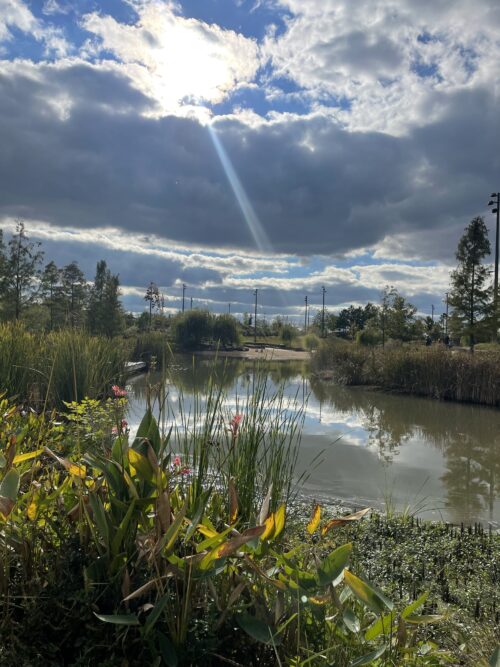
It is absolutely beautiful and vast with inside-out architecture (nature making its way indoors) and is the largest privately funded park community space in US history, second to Central Park.
There is free Wi-Fi in two meeting spaces, gorgeous outside in architecture featuring wood, wild horse sandstone, fireplaces, a unique art installation to rest in, reminiscent of a Cabinet of Wonder, by artist Mark Dion.
After some drinks at the aptly named Vintage Wine Bar that features boutique wines, cocktails, and vintage decor we headed to dinner at the Israeli-owned Oren for upscale locally sourced, regionally seasoned, globally influenced, and very Israeli Mediterranean cuisine.
Everything was beautiful and authentic except for the lack of pita bread and each dish was more resplendent than the next. We tried labneh, the best arancini I’ve tasted outside of Italy, hanger steak, curry roasted cauliflower, beautifully paired cocktails and exquisite desserts.
Dinner was at the destination restaurant headed by James Beard and nominated Chef Bobby Benjamin Lowood that featured New American style.
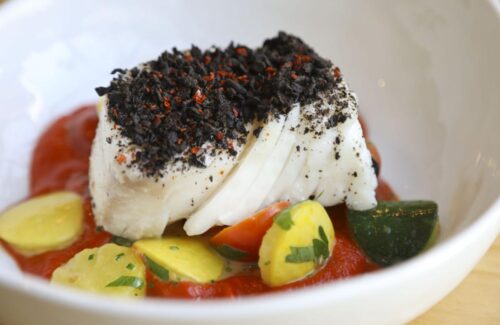
The restaurant reflects varied cultures and traditions in food and celebrates such with fresh pasta, wood-fired dishes and thoughtful pairings. All with an emphasis on local produce like meat grown and raised by farmers in and around north-eastern Oklahoma. It was an aesthetically beautiful experience as well.
The next few days I meandered on my own and was lucky enough to experience Bull in the Alley, a chic speakeasy known for its flights of Iberico bacon and local steak. I also checked out Pryhme steak, owned by Award-winning Chef Justin Thompson, it is an upscale and modern interpretation of the American steakhouse.
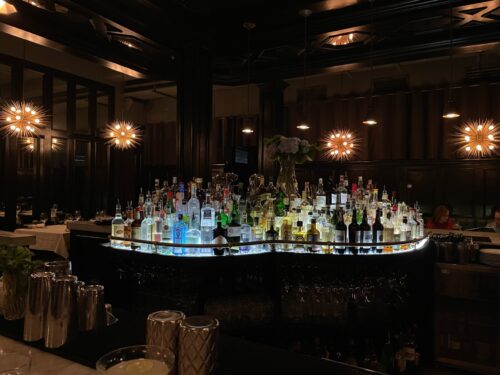
Chef Thompson also owns Juniper and Farrell bread at Mother Road. Boston Tile, a sort of a speakeasy in downtown is a popular Tulsa chic spot featuring high-end cocktails and an upscale and downscale menu.
Here we ran into some of the characters we met during our tour, the charm of a smaller town, Tulsa area is one million residents in total,
and is a purple city in a red county.
I also met with the incredible Tulsa Jewish community’s three of the six Jewish billionaires who fund all the amazing projects in Tulsa.
The richest Jewish population in the world lives in Tulsa and Tulsa Tomorrow wants young Jews aged 21-40 to move back and revitalize the 1500-person community that has two major synagogues.
The Sherwin Miller Museum of Jewish Art featured a project where a resident photographed nearly every shul in the world and gorgeous stained glass rescued from synagogues.

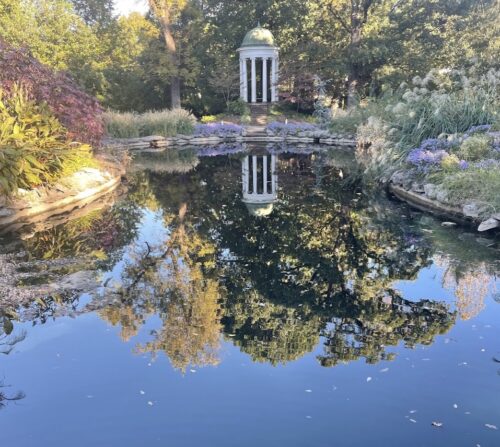
The Philbrook museum has a garden reminiscent of Versailles, where for $18 you can view modern art. And, there is so much more to Tulsa. Tulsa was once known as the oil capital of the world. This made it quite a wealthy town, albeit not evenly distributed.
Furthermore, it is and has long been a beacon for immigrants and transplants since the 2018 Tulsa Remote program, which is harder to get into than Harvard and draws dynamic talent from around the nation.
They are all seeking a better quality of life, like owning a home, wealth potential, and opportunities (almost too much to list) and the local community is benefitting all thanks to hyperlocal philanthropy.
The brain drain is now a brain flood with the influx of creatives and talent from places like New York City, Los Angeles, and around the globe and makes the city a growing destination dining town with two James Beard-nominated chefs, award-winning beer gardens, and many speakeasies in town that are as sleek as any New York City or Los Angeles establishment.
Tulsa is now poised to be a new Austin, and Covid accelerated this evolution so move there before it’s overrated and check it out while it’s still hot!
 Alyssa Pinsker is a luxury travel writer, influencer, and media coach. She has written for Fodors, Lonely Planet, BBC Travel, Cosmopolitan, New York Post, and more. She has lived in Japan, France, India, Switzerland, and Ukraine and traveled to just 42 countries so far
Alyssa Pinsker is a luxury travel writer, influencer, and media coach. She has written for Fodors, Lonely Planet, BBC Travel, Cosmopolitan, New York Post, and more. She has lived in Japan, France, India, Switzerland, and Ukraine and traveled to just 42 countries so far
- Fall Clothing for Your Travels - August 30, 2024
- Mekong Chronicles: The River That Shaped Southeast Asia - August 28, 2024
- Gadgets and Goodies You Might Enjoy - August 27, 2024


